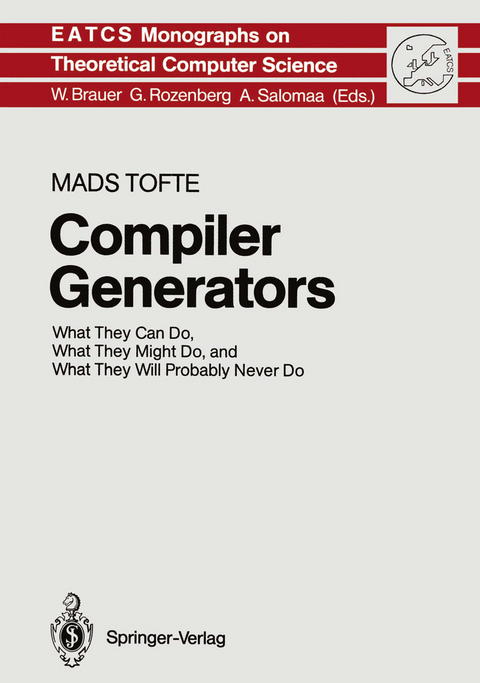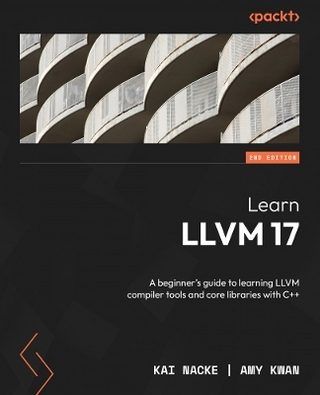
Compiler Generators
Springer Berlin (Verlag)
978-3-540-51471-8 (ISBN)
1 Introduction.- 1.1 The Scope of This Monograph.- 2 Report on the Compiler Generator CERES.- 2.1 Overview of CERES.- 2.2 Description of Input to CERES.- 2.3 The Object Language T.- 2.4 The Compilers Generated by CERES.- 2.5 The Compiler Generator.- 2.6 Implementation and Experience.- 3 Compiler Generation, Composability, and Self-composability.- 3.1 Programming Languages and Compilers.- 3.2 The Compiler Generation Problem.- 3.3 Using a Semantic Language to Define Programming Languages.- 3.4 Composability and Self-composability.- 4 Discussion of Technical Aspects of Compiler Generation.- 4.1 The Algebraic Connection.- 4.2 On Choosing Good Semantic Languages.- 4.3 Interface Problems.- 5 On Semantics, Compiler Generation, and Hacking.- 5.1 On the Nature of Machine-Readable Language Definitions.- 5.2 On Writing Language Definitions.- 5.3 On the Role of Mathematical Proofs.- Appendix 1 The LOOP Interpretation.- Appendix 4 The SelfComposer.- References.- Table of Symbols and Their Meanings.
| Erscheint lt. Verlag | 27.6.1990 |
|---|---|
| Reihe/Serie | Monographs in Theoretical Computer Science. An EATCS Series |
| Zusatzinfo | XI, 147 p. |
| Verlagsort | Berlin |
| Sprache | englisch |
| Maße | 178 x 254 mm |
| Gewicht | 411 g |
| Themenwelt | Mathematik / Informatik ► Informatik ► Programmiersprachen / -werkzeuge |
| Informatik ► Theorie / Studium ► Compilerbau | |
| Schlagworte | Compiler • Compilererzeugung • Compilierung • Complexity • Denotationelle Semantik • Formale Sprachdefiniton • Formale Sprache • formal language • Hardcover, Softcover / Informatik, EDV/Programmiersprachen • HC/Informatik, EDV/Programmiersprachen • object oriented design • Programmiersprache • Programmiersprachen • programming • Programming language • Semantics • Syntax |
| ISBN-10 | 3-540-51471-6 / 3540514716 |
| ISBN-13 | 978-3-540-51471-8 / 9783540514718 |
| Zustand | Neuware |
| Haben Sie eine Frage zum Produkt? |
aus dem Bereich


